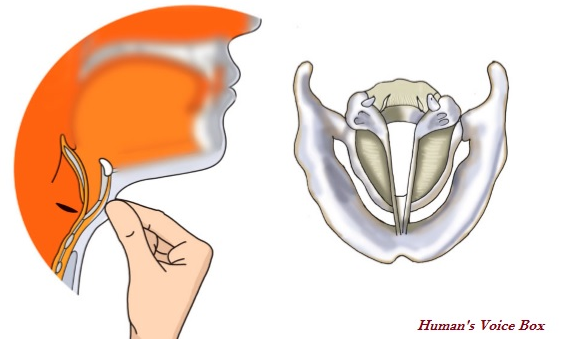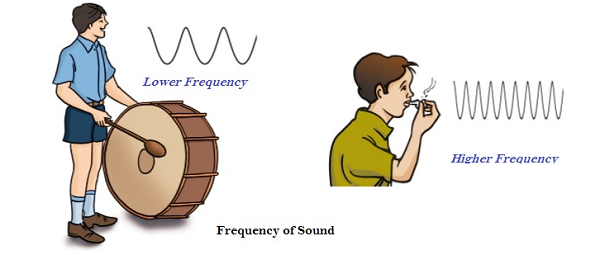
- Physics Notes for UPSC IAS Prelims (Part I)
- Physics - Home
- Physics - Force and Pressure
- Physics - Friction
- Physics - Some Natural Phenomena
- Physics - Motion
- Physics - Force and Laws of Motion
- Physics - Gravitation
- Physics - Mass and Weight
- Physics - Work and Energy
- Physics - Light
- Physics - Reflection and Refraction
- Images Formed by Spherical Mirrors
- Physics - Refraction of Light
- Physics - Spherical Lenses
- The Human Eye & Colorful World
- Refraction of Light Through a Prism
- Physics - Electricity
- Chemical Effects of Electric Current
- Magnetic Effects of Electric Current
- Physics - Electric Motor
- Physics - Source of Energy
- Physics - Sound Part I
- Physics - Sound Part II
- Speed of Sound in Different Media
- Physics - The Solar System
- Physics - Stars and The Solar System
Physics - Sound Part I
Introduction
The to and fro or back and forth motion of an object is known as vibration. Therefore, when a tightly stretched band is plucked, it vibrates and when it vibrates, it produces sound.

In some cases, vibration can be easily observed, but in most of the cases, their amplitude is so small that it is very difficult to see them with naked eye; however, their vibration can be easily felt in the form of sound. E.g. Tabla, Harmonium, Flute, Sitar, etc.

In human beings, the sound is produced by the larynx (also known as voice box).
One can feel the vibration by keeping fingers on the throat; this is the part that is known as the voice box.
Sound Produced By Human Beings
Two vocal cords (as shown in the given image), are stretched across the voice box (or larynx) in such a way that it leaves a narrow slit between them for the passage of air; this is how sound is produced.
The vocal cords in men are about 20 mm long.
The vocal cords in women are about 15 mm long and children’s vocal cords are even more shorter; this is the reason that men, women, and children have different voice.

Human Ears
The part through which we hear is known as ear.
The shape of the outer part of the ear is similar to a funnel; therefore, when sound enters in it, it keeps going down through a canal to the end. At the end, there is a thin membrane stretched tightly; it is known as the eardrum.

The eardrum is very similar to a stretched rubber sheet and sound vibrations make the eardrum vibrate.
The eardrum sends vibrations to the inner ear and from there, the signal goes to the brain; this is how we hear the sound clearly.
Frequency of A Vibration
The vibration motion is known as oscillatory motion.
The number of oscillations per second is known the frequency of oscillation and the frequency is expressed in hertz (Hz).
Amplitude and frequency are the two significant features of any sound.
The loudness of sound depends on its amplitude; if amplitude is higher, then the sound is louder and if the amplitude is lesser, then the sound is feeble.
The loudness of sound is expressed in a unit and it is expressed in decibel (dB).
The following table illustrates the loudness of sound generated from various sources −
| Source of Sound | Loudness of Sound |
|---|---|
| Normal breathing | 10 dB |
| Soft whisper (at 5m) | 30 dB |
| Normal conversation | 60 dB |
| Busy traffic | 70 dB |
| Average factory | 80 dB |
The frequency determines the pitch or shrillness of the sound; therefore, if the frequency of vibration is higher, then the sound has a higher pitch and shrillness is higher and vice versa.

The frequencies of sound less than about 20 vibrations per second (i.e. 20 Hz) cannot be perceived by the human ear.
The frequencies of sound higher than about 20,000 vibrations per second (i.e. 20 kHz) cannot be perceived by the human ear.
For a human ear, the range of audible frequencies roughly range between 20 and 20,000 Hz.
Some of the animals can hear the sounds of frequencies higher than 20,000 Hz, e.g. dogs.
Noise and Pollution
Unpleasant sounds are called noise.
Presence of excessive or annoying sounds in the environment is called noise pollution.
Noise pollution may cause many health related problems. Such as Lack of sleep, hypertension (high blood pressure), anxiety, impairment of hearing, etc.
Plantation on the roadside and other places especially in the city region and industrial area can effectively reduce the noise pollution.